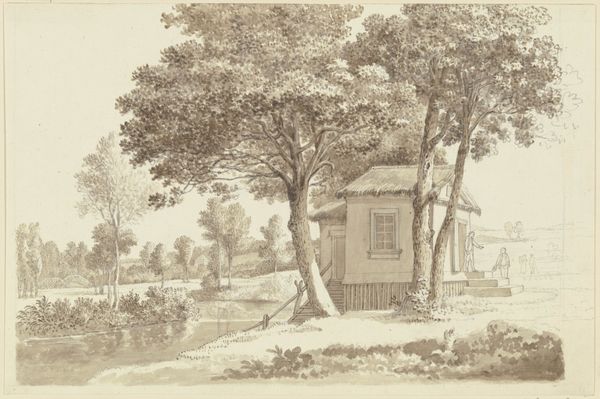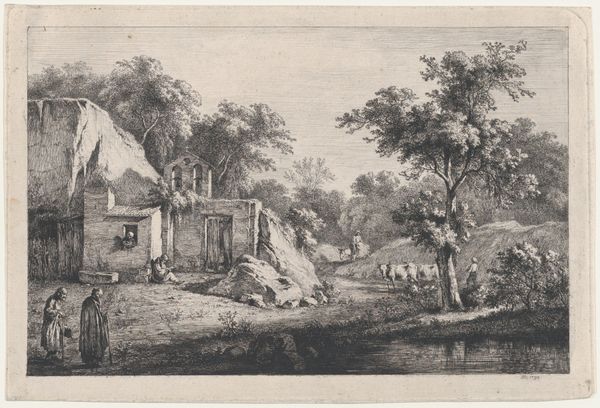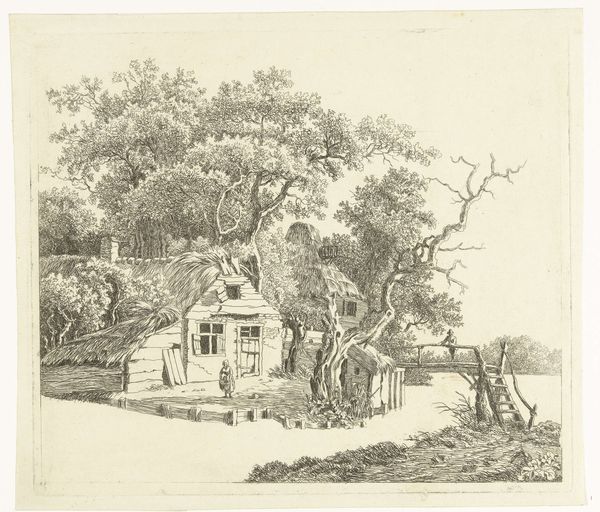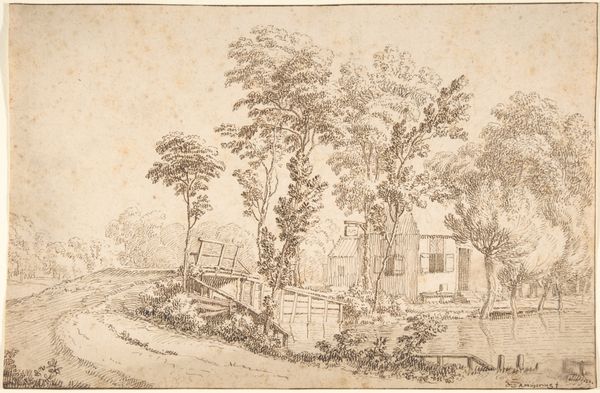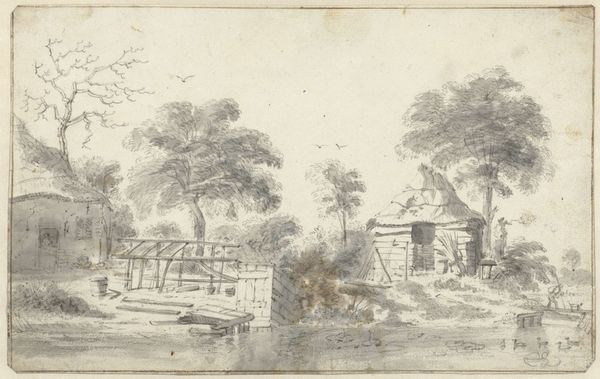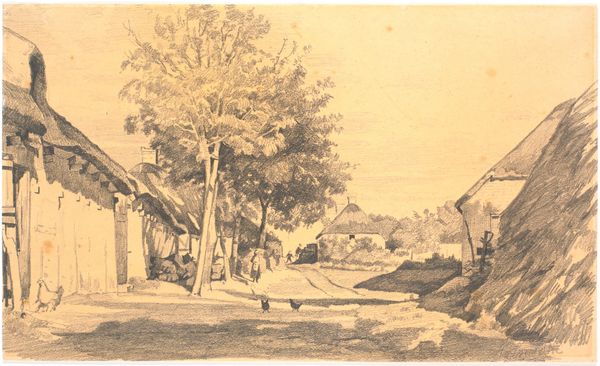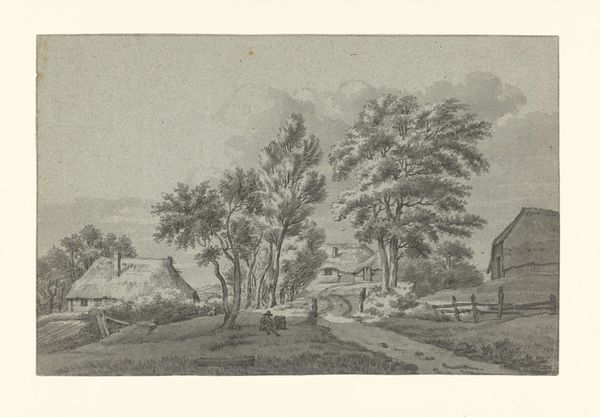
drawing, etching, ink, indian-ink, pencil, chalk
#
landscape illustration sketch
#
drawing
#
netherlandish
#
light pencil work
#
16_19th-century
#
mechanical pen drawing
#
pen sketch
#
etching
#
pencil sketch
#
landscape
#
personal sketchbook
#
ink
#
indian-ink
#
romanticism
#
pen-ink sketch
#
pencil
#
chalk
#
pen work
#
sketchbook drawing
#
sketchbook art
#
realism
Copyright: Public Domain
Editor: Here we have "Gehöft unter Bäumen bei Haarlem," which translates to "Farmstead Under Trees near Haarlem," an etching by Franciscus Andreas Milatz. It looks like a quiet scene, perhaps a little melancholic. What do you see in this piece? Curator: It presents a picturesque scene, certainly. But it also reflects a specific moment in Dutch history and the socio-economic realities of the rural population. This "Farmstead" isn't just an idyllic image; it's a site of labor. The presence of figures engaged in work reminds us of the reliance of agrarian societies on often grueling manual labor. How might this relate to emerging class structures? Editor: That's interesting, I didn't think about it that way. The people seemed small and anonymous, blending into the scenery almost. It looks very peaceful. Curator: But whose peace are we witnessing, and at what cost? Consider the romanticization of rural life that was prevalent in the 19th century. These landscapes served to mask the systemic inequalities faced by agricultural workers, especially considering their lack of representation. Does it challenge or reinforce the social order? Editor: I see what you mean. It's easy to just enjoy the drawing without thinking about the lives of the people who actually lived there. Do you think Milatz was making a deliberate social commentary, or just painting what was in front of him? Curator: That’s a tricky question! Milatz belonged to a world that appreciated idealized nature. However, realism also emerged. He likely captured what was around him while possibly being blind to, or at least not overtly critical of, existing structures. How much agency did artists at the time really have to speak out? What platforms? Editor: That makes me wonder about my own biases when I look at art from the past. It’s so important to keep the cultural and historical context in mind. Curator: Absolutely. Art isn't created in a vacuum. Understanding its historical context allows us to engage more deeply with the work. Editor: I will definitely keep that in mind going forward. It makes me want to learn more about art history in this context. Curator: Great. Considering such elements is key to any enriching encounter with art.
Comments
No comments
Be the first to comment and join the conversation on the ultimate creative platform.



